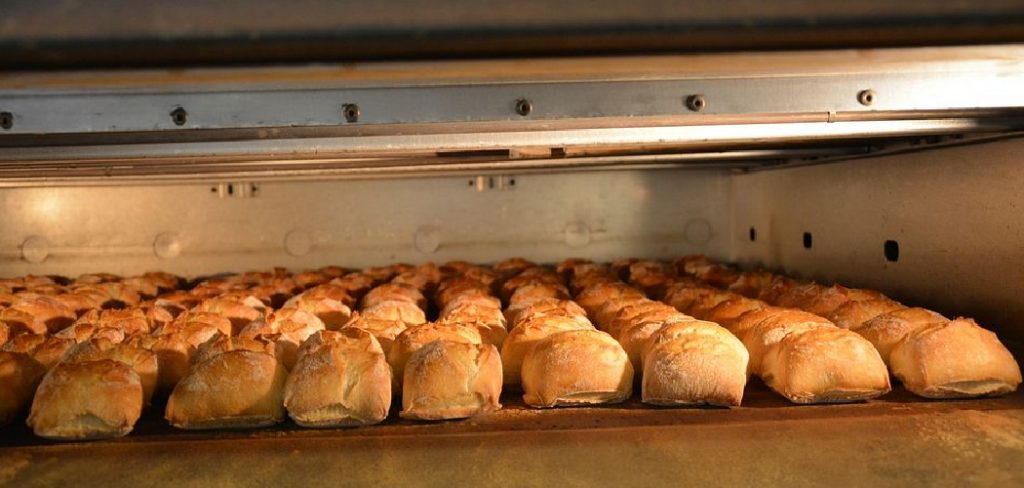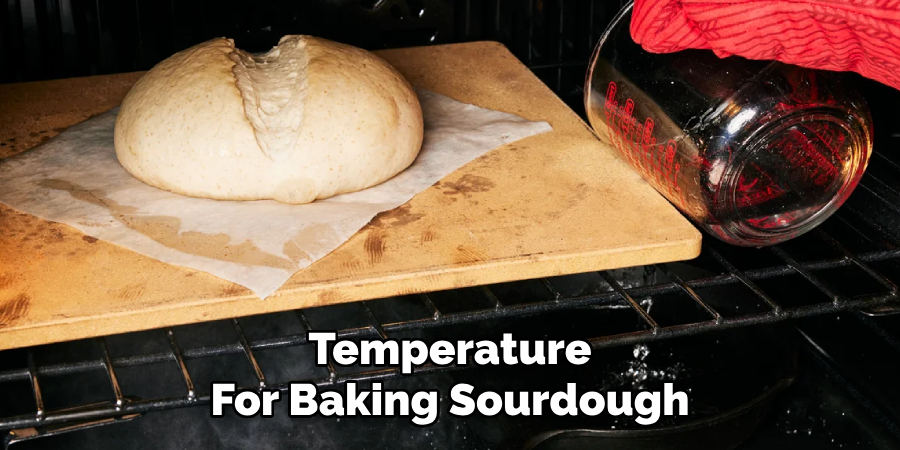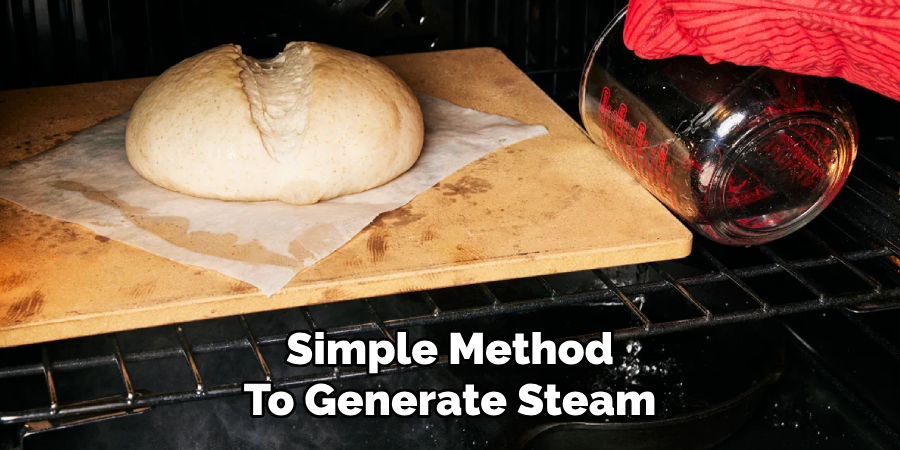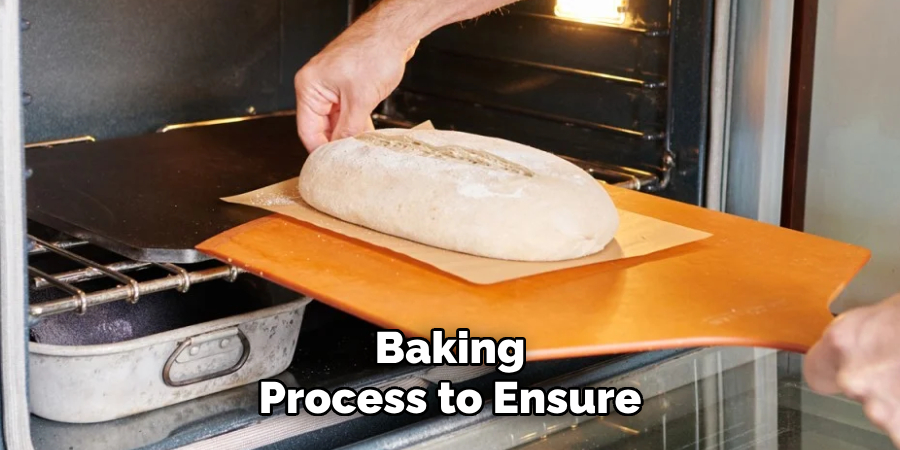Are you looking to make your delicious sourdough bread at home? Look no further!
Creating steam in your oven is essential in baking perfect sourdough bread. Steam helps to keep the dough surface moist during the initial stages of baking, allowing the bread to expand fully and develop a beautiful, crisp crust. Without steam, the crust can harden too quickly, which can prevent the bread from rising correctly and achieving that signature artisan look. Additionally, steam contributes to developing a shiny, crackly crust that is desirable in sourdough bread.

This guide on how to create steam in oven for sourdough will walk you through simple and effective methods for generating steam in your home oven, helping you elevate your sourdough baking to the next level.
What Are the Benefits of Creating Steam in Oven for Sourdough?
Before we dive into the different methods for creating steam in your oven, let’s first understand why it is essential for making sourdough bread. Here are some of the benefits of using steam in your home oven:
- Moisture: Steam helps keep the dough surface moist during the initial baking stages, allowing the dough to expand fully and develop a beautiful, crisp crust.
- Crust Development: As mentioned earlier, steam helps create a shiny and crackly crust desirable in sourdough bread. This is because steam creates a barrier on the surface of the dough, preventing it from hardening too quickly.
- Better Rise: The moisture from steam also aids in yeast development, resulting in a better rise and light, airy texture in your bread.
- Professional Results: Creating steam in your oven mimics the environment of professional bakeries, allowing you to achieve similar results at home.
Now that we have established the benefits of using steam in sourdough bread baking, let’s explore different methods for creating steam in your home oven.
What Will You Need?
To create steam in your oven, you will need:
- A baking tray or cast iron skillet
- Water
- Oven-safe dish or pan
- Spritzer bottle filled with water (optional)
Once these items are ready, follow one of the methods below to create steam in your oven for sourdough bread.
8 Easy Steps on How to Create Steam in Oven for Sourdough
Step 1: Preheat Your Oven
Preheating your oven is an essential first step to ensure it reaches the correct temperature for baking sourdough. Most sourdough bread recipes recommend preheating the oven to a high temperature, typically around 475°F (245°C). A fully preheated oven provides the initial burst of heat needed for a proper “oven spring,” which is the term used to describe the rapid rise the dough experiences during the first few minutes of baking.

During this time, the yeast is at its most active before it gets killed by the heat, and the steam generated inside the oven helps maximize this effect by keeping the crust pliable enough to expand. Ensure your baking tray, stone, or Dutch oven is also inside the oven during preheating, as this helps achieve even results. Preheating usually takes around 30 minutes, so plan accordingly to have your dough ready at just the right time.
Step 2: Prepare Your Dough for Baking
Once your oven is preheated, it’s time to prepare your dough for baking. Carefully transfer your sourdough loaf onto a piece of parchment paper or your preheated baking tray, stone, or Dutch oven. If using a proofing basket, gently turn the dough onto the surface to avoid deflating it. Before placing it in the oven, score the top of the dough with a sharp blade or bread lame. Scoring allows the dough to expand properly in the oven and gives the bread its characteristic patterns. Work quickly to minimize heat loss from the oven, and handle your dough carefully to retain its airy structure.
Step 3: Bake Your Sourdough Loaf
Place the prepared dough into the oven, ensuring it sits on the preheated tray, stone, or inside the Dutch oven. If using a Dutch oven, cover it with the lid to create steam during the initial baking stage, which helps develop a crisp, golden crust. Bake at the recommended temperature, typically around 450°F (230°C), for 20-30 minutes with the lid on or until the loaf has risen and steamed.
Then, remove the lid or increase airflow to finish the baking process for another 15-20 minutes, allowing the crust to darken and become crunchy. Keep an eye on your loaf during these final minutes to avoid over-browning. Once baked, the bread should sound hollow when tapped on the bottom, signaling it’s ready to be removed from the oven.
Step 4: Add Steam to the Oven
Steam plays a critical role in achieving the perfect crust and texture for your bread. By creating a moist environment inside the oven during the initial baking stage, the steam helps delay the setting of the crust, allowing the bread to expand fully and develop an open, airy crumb structure. Additionally, the steam contributes to producing a glossy, caramelized crust that enhances the loaf’s flavor and appearance.

There are several ways to add steam to your oven. One common method is to place a shallow pan on the bottom rack of the oven and carefully pour hot water into it just before putting the bread inside. Alternatively, spritz the bread with water using a spray bottle or add ice cubes to the hot pan to generate steam. Whichever method you choose, ensure the oven retains the steam effectively by closing the door during the initial baking period. Managing steam correctly can significantly impact the final quality of your homemade bread, transforming it into an artisan masterpiece.
Step 5: Use a Cast Iron Skillet
Creating steam in your oven is easy with a cast iron skillet. Before preheating your oven, place the skillet on the bottom rack and fill it with lava rocks or small stones. Preheat the oven as usual and let it heat up for 30 minutes before placing your bread inside. Before you place the dough inside, pour hot water over the heated rocks to generate a burst of steam that will rapidly rise through your oven chamber, enveloping your bread in moisture. This method mimics professional bakery ovens with built-in steam injection systems, allowing you to achieve similar results at home.
Step 6: Utilize an Oven-safe Dish
Another simple method to generate steam in your home oven is using an oven-safe dish, such as a metal or ceramic baking pan. Start by placing the dish on the bottom rack of your oven before preheating it. Once the oven has reached the desired temperature, carefully pour a cup of hot water into the dish before placing your bread dough in the oven.

The hot water will quickly evaporate, creating a moist and steamy environment ideal for baking bread. You may also cover the dish loosely with aluminum foil for added efficiency, ensuring the steam is directed upward. This technique enhances crust development and improves the oven spring, giving your bread that irresistible artisan quality. Be cautious when handling the hot water to prevent burns, and always use oven mitts for safety.
Step 7: Use a Preheated Baking Stone or Steel
Consider using a preheated baking stone or steel in conjunction with steam for a professional touch. Place the baking stone or steel on the middle rack of your oven and allow it to heat for at least 30 minutes before baking. The preheated surface retains and evenly distributes heat, promoting a crisp and well-structured crust.
When paired with a method of steam generation, such as the oven-safe dish technique mentioned earlier, this approach can significantly improve your bread’s overall texture and appearance. Slide your dough onto the hot surface using a parchment paper or a pizza peel to prevent burns and ensure ease of transfer.
Step 8: Monitor Baking Time and Temperature
Carefully monitor the baking time and temperature to achieve the perfect loaf. Most artisan breads bake at a temperature range of 450°F to 475°F (230°C to 245°C), depending on the recipe. Check on your bread halfway through the baking process to ensure it’s not browning too quickly. If needed, rotate the loaf or adjust the oven temperature. The bread is typically done when the crust is a deep golden brown and the internal temperature reaches about 200°F to 210°F (93°C to 99°C). Use an instant-read thermometer to confirm doneness, and allow the bread to cool slightly before slicing to maintain its structure.

By following these steps and experimenting with different techniques, you can achieve bakery-quality artisan sourdough bread in the comfort of your own home.
Conclusion
How to create steam in oven for sourdough is essential for achieving that coveted crisp, golden crust on your sourdough bread.
The steam helps keep the surface of the dough moist during the first several minutes of baking, allowing it to expand fully and develop the characteristic open structure. Several methods to generate steam in your home oven include placing a pan of boiling water on the bottom rack, spritzing the oven walls with water using a spray bottle, or baking your bread inside a preheated Dutch oven or cloche to trap natural moisture. Each technique has benefits, so experiment to find what works best for your setup.
With proper steam, you can elevate the quality of your sourdough and achieve professional-level results.
Professional Focus
Angela Ervin, a former interior designer turned blogger, specializes in kitchen design and renovations. Through her website, she blends her passion for cooking with design expertise, sharing practical and creative ideas. Known for balancing functionality and beauty, Angela’s insightful content has made her a trusted voice in home design and lifestyle.
About the Author
Angela Ervin, an experienced interior designer and blogger, combines her passion for kitchen renovations with storytelling. Living in Petersburg with her family, she enjoys cooking and testing her projects firsthand. Known for her humor and relatable style, Angela shares creative, functional design insights through her content, making her a trusted voice in home design.
Education History
University: Virginia Commonwealth University
Degree: Bachelor of Fine Arts (BFA) in Interior Design
- Angela’s education at VCU focused on mastering core interior design principles, including spatial planning, color theory, materials selection, and sustainable design practices.
- She gained hands-on experience through studio projects and collaborative design exercises, which honed her ability to create functional and aesthetically pleasing environments.
- Her coursework also emphasized problem-solving and practical applications of design, preparing her for real-world projects like her self-directed kitchen renovations.
- The program’s strong foundation in both technical skills and creative expression shaped Angela’s ability to seamlessly integrate form and function in her work.
